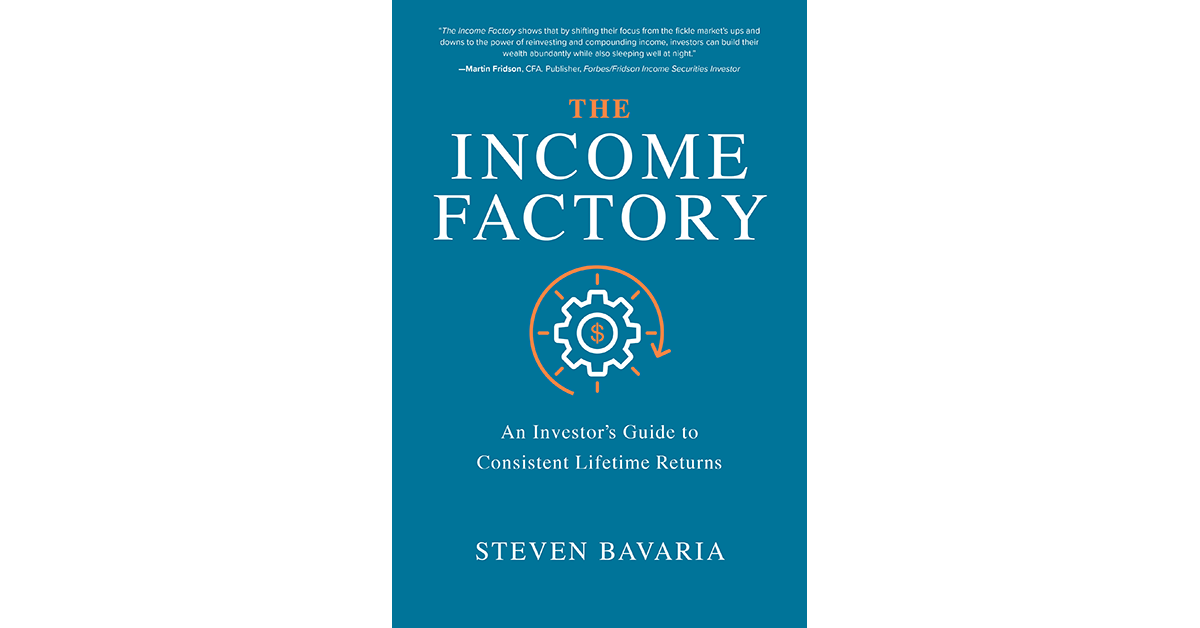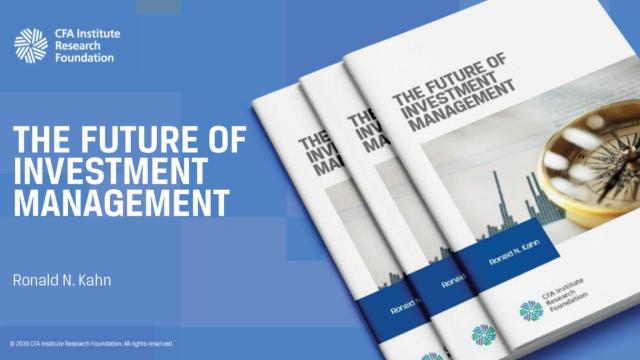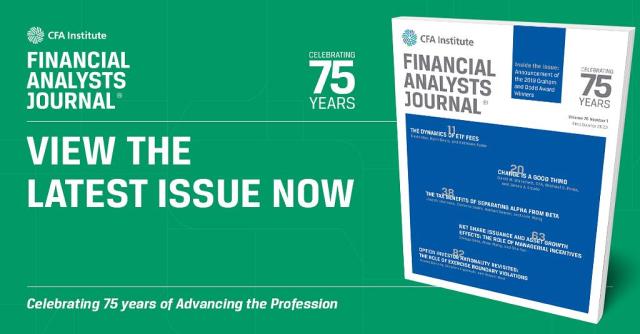[ad_1]
The Income Factory: An Investor’s Guide to Consistent Lifetime Returns. 2020. Steven Bavaria. McGraw-Hill Education.
Professional investors can find unique, well-differentiated ideas among the abundant output of many contributors to Seeking Alpha, a crowd-sourced content service for financial markets. A standout among the many contributors is Steven Bavaria, with his message of long-term returns (ideally, longer than 20 years) produced entirely by income from dividends, interest, distributions, and their reinvestment and compounding.
In The Income Factory, he convincingly demonstrates how wealth building is possible in a style divorced from the more conventional approach of balancing growth and income, based on an investor’s stated objectives and risk tolerance. His perspective is deeply fundamental, with a strong grounding in credit and risk analysis supported by decades of experience in banking and credit. The Income Factory shows that double-digit returns need not be derived from either growth or growth and income but are achievable from income and its reinvestment alone.
Portfolio managers for
individuals and institutional portfolio managers will want to look under the
hood of this approach. Bavaria substantiates it in numerous ways throughout the
book, using various return assumptions and investment blends. For starters, he
explains why the earnings stream of the “Income Factory” increases faster when
stocks are flat or dropping than when they are rising. The Income Factory
method also provides a superior sense of security in volatile markets because
it discourages bailing out or taking defensive actions that could be costly over
the long term. Furthermore, the approach also requires companies not to grow in
value but simply to operate and to keep operating.
The author considers the
book as essentially three books. Book One, Chapters 1 through 5, describes the
overall philosophy and strategy of the Income Factory approach. Book Two,
Chapters 6 through 9, provides the building blocks for constructing an Income
Factory, including Income Factory Light, a blend with traditional investing.
The building blocks are represented by a selection of top-quality closed-end
funds that the author has monitored and used over time. Finally, Book Three,
Chapters 10 through 14, discusses in depth the risks and rewards of the various
equity and fixed-income sectors, especially the highest yielding ones that can
potentially enhance returns.
As an impatient investor, I began reading The Income Factory at Chapter 10, “The Taxonomy of Risk and Reward,” as soon as I finished the Introduction and Chapter 1, “How to Use This Book.” The author immediately opened my eyes to a much broader definition of fixed income than I was acquainted with and also to a surprising contrast between bond risk and stock risk.
First, in terms of the
choices available in fixed-income investing, the author ranges well beyond the
traditional territory of bonds, loans, and preferred stocks into leveraged
loans, master limited partnerships (MLPs), business development companies,
collateralized loan obligations (CLOs), and closed-end funds that hold equities
and use option strategies to trade off future stock appreciation for higher and
steadier current cash income. Rather than select individual securities, Bavaria
relies on top performers among managed closed-end funds that invest in
conventional as well as more complex asset classes. He goes on to describe each
asset category’s dynamics and the credit risk (which overshadows interest rate
risk in the current environment) that it entails. The burden is on the investor
to understand the risks associated with these assets and how they can
potentially affect income production.
Second, I eagerly absorbed
Bavaria’s dissection of equity risk, which astutely explains the price action
for stocks following the outbreak of the COVID-19 pandemic. He points out that
equity owners, besides assuming the entrepreneurial risk and reward of owning a
company, take on the firm’s credit risk as much as its debt holders do. A
stockholder must out-earn the dividend yield by realizing price appreciation to
achieve what the Income Factory promises to deliver solely by cash
distributions and reinvestment. Another thought to ponder: Many equity
investors never consider purchasing high-yield bonds (those rated BB+ or below)
because of their perceived higher risk. The author states that this category
includes more than half of all companies, so most stocks labeled “midcap” and
“small cap” are actually non-investment grade.
Considering the abundance of
well-supported and ably presented ideas in The
Income Factory, what could go wrong or not work? The first thing that comes
to my mind is distribution cuts that would reduce the rate of cash
distribution, reinvestment, and compounding. Yet this would not happen in all
asset classes and securities at once, one hopes! Following the COVID-19
outbreak, we in fact witnessed distribution cuts in a number of securities.
What the author actively recommended and
did was to shift the allocations of the investments as appropriate under
the prevailing conditions (see Steven Bavaria’s “Income Factory Update: Titanic Hits Iceberg, Doesn’t Sink,” Seeking
Alpha, 30 March 2020). In order to ride out a recession and a pandemic
(both of indeterminate length), an investor could choose to “de-risk” the
investment portfolio and move into investments with better prospects for
surviving, if not thriving, though generating lower distribution yields.
Another thought of what could go wrong is investing in an income “enhancer” (such as CLOs, MLPs, or equity covered calls) without fully understanding how it works. The Income Factory is not a “get in, get out, get paid” approach. It represents a truly long-term (20-year or longer) investment method.
Finally, I am concerned that
interest rates may be permanently lower, which would reduce the expected rate
of return for the Income Factory approach. The rate on the US 10-year
government bond lurched from 1.919% at the end of 2019 to 0.711% in late-May
2020, compared with 2.416% one year earlier. Should this trend continue, it
would clearly constrain the interest rates on new issues that Income Factory
investors would consider.
The Income Factory approach demands a lot of discipline, but it is so well explained and mathematically appealing that many investors will want to test it, if not embrace it.
If you liked this post, don’t forget to subscribe to the Enterprising Investor.
All posts are the opinion of the author. As such, they should not be construed as investment advice, nor do the opinions expressed necessarily reflect the views of CFA Institute or the author’s employer.
Professional Learning for CFA Institute Members
CFA Institute members are empowered to self-determine and self-report professional learning (PL) credits earned, including content on Enterprising Investor. Members can record credits easily using their online PL tracker.
[ad_2]
Image and article originally from blogs.cfainstitute.org. Read the original article here.



